Visiting The Japanese Gardens (Page Three)
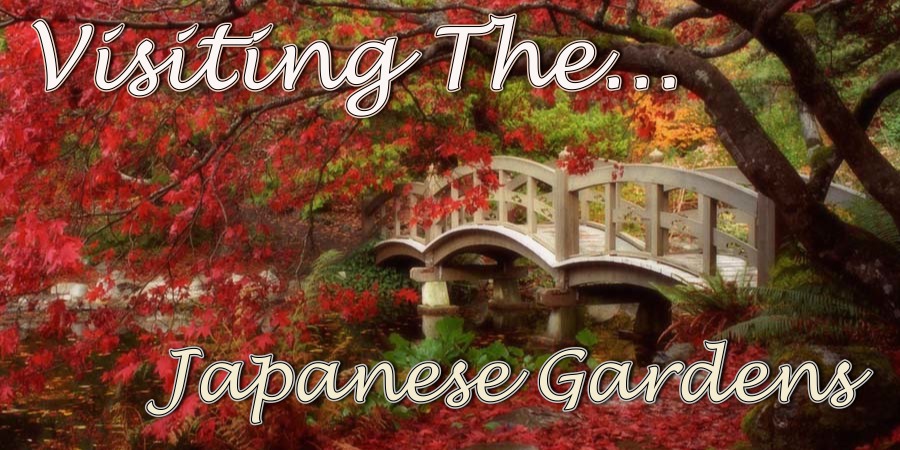
Tea time
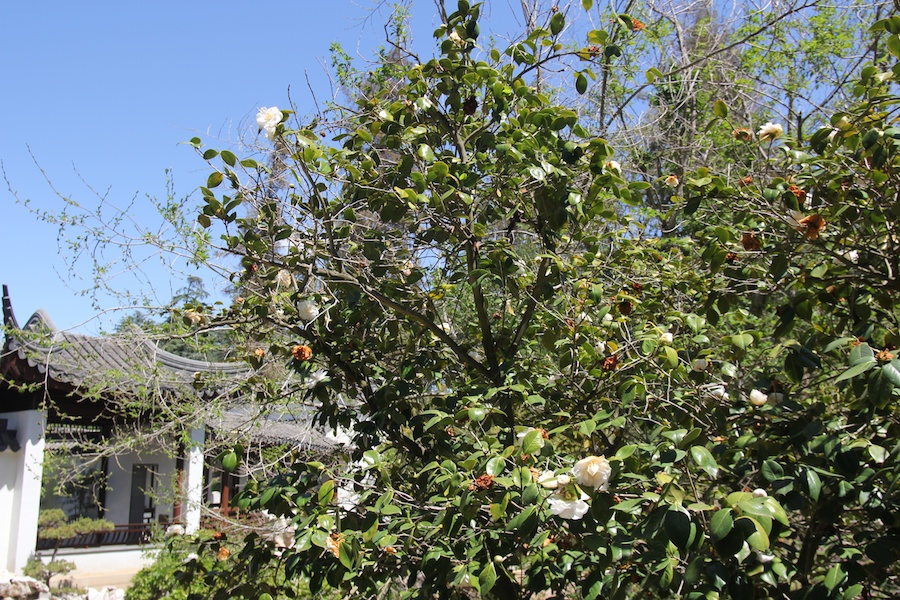
Good bye Chinese... Hello Japanese
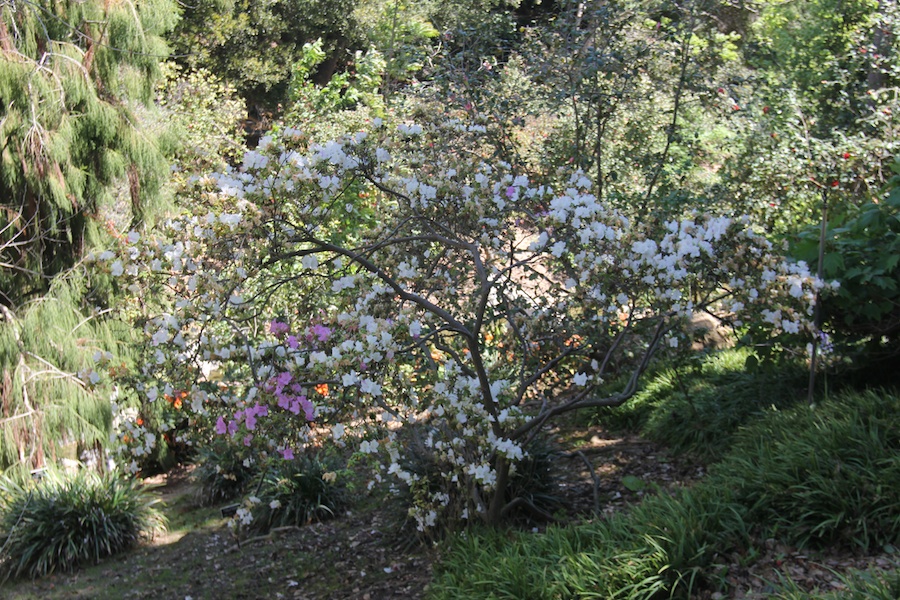
Blooms everywhere


Down the path we go...

Camellias....
Did You Know? - Camellia, the camellias, is a genus of flowering plants in the family Theaceae. They are found in eastern and southern Asia, from the Himalayas east to Japan and Indonesia. There are 100?250 described species, with some controversy over the exact number.
The genus was named by Linnaeus after the Jesuit botanist Georg Joseph Kamel, who worked in the Philippines, though he never described a camellia. This genus is famous throughout East Asia; camellias are known as ch?hu? (??) in Chinese, "tea flower", an apt designation, as tsubaki (?) in Japanese, as dongbaek-kkot (???) in Korean and as hoa tr? or hoa ch? in Vietnamese.
The most famous member is certainly the tea plant (C. sinensis). Among the ornamental species, Camellia japonica, Camellia oleifera and C. sasanqua are perhaps the most widely known, though most camellias grown for their flowers are cultivars or hybrids.

Deep in the "forest" we find bright colors

Time to visit and share
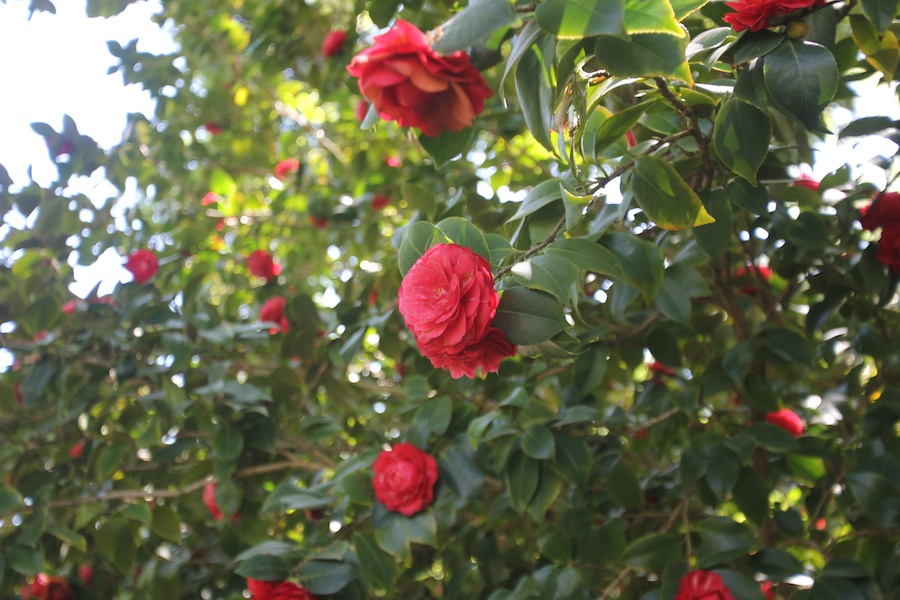
Beautiful blossoms overhead
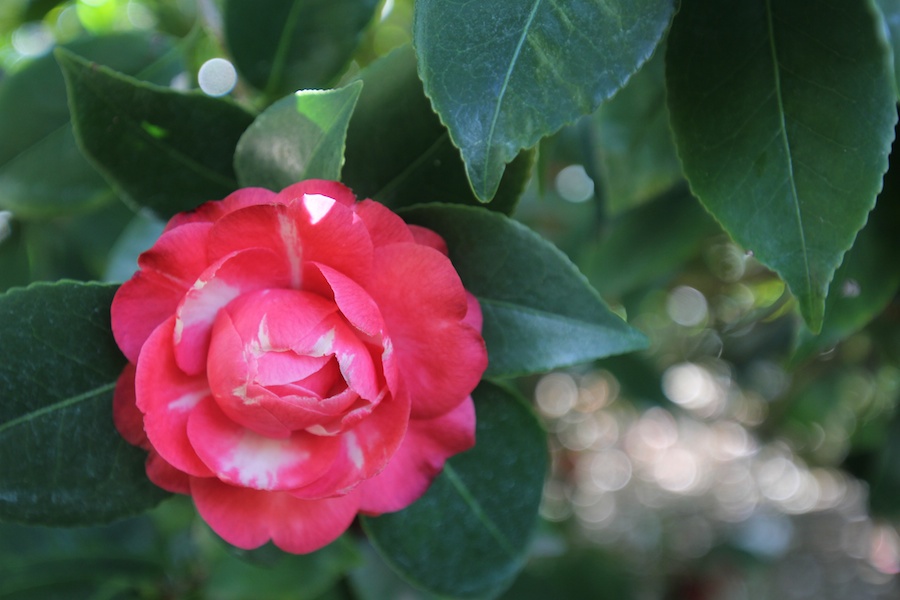
Up close....
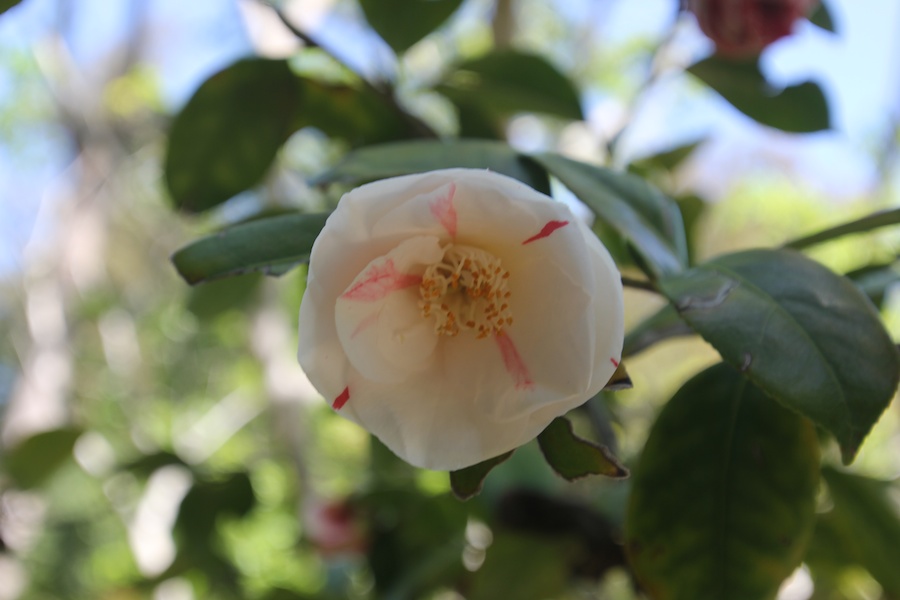
Many different colors
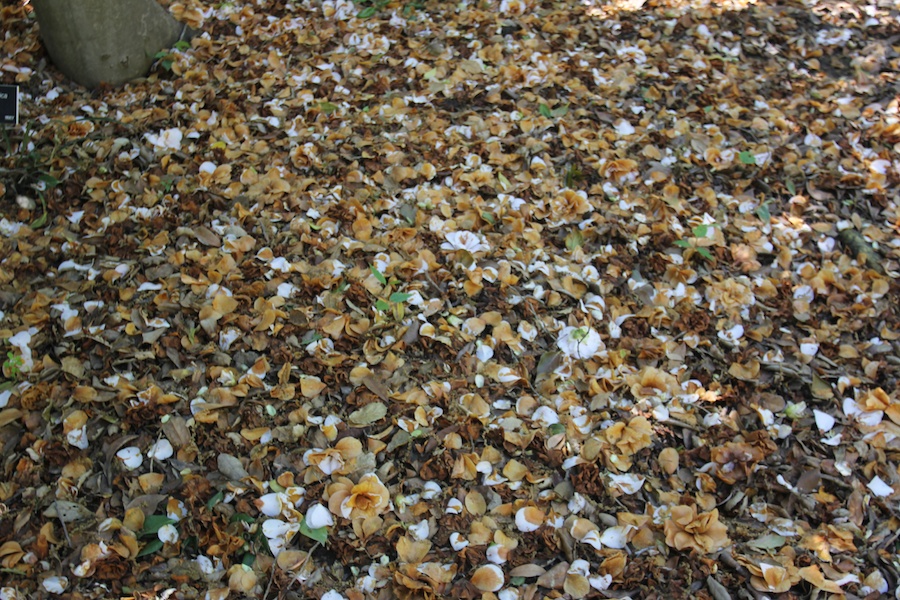
The ground was covered in blossom mulch....
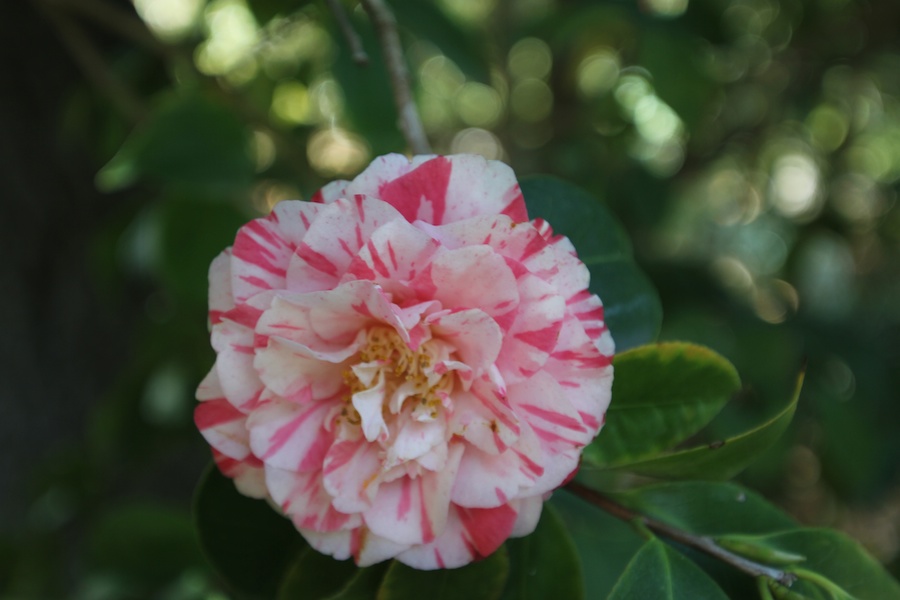
Candy cane???
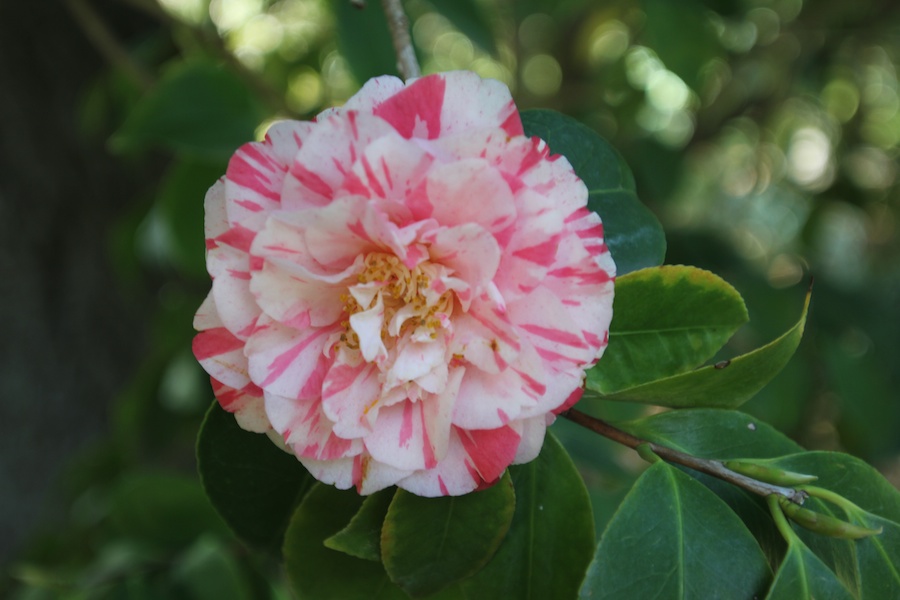
Bright and cheerful

"Come on ladies... We don't want to miss tea"

The sky sneaks a peak once in a while
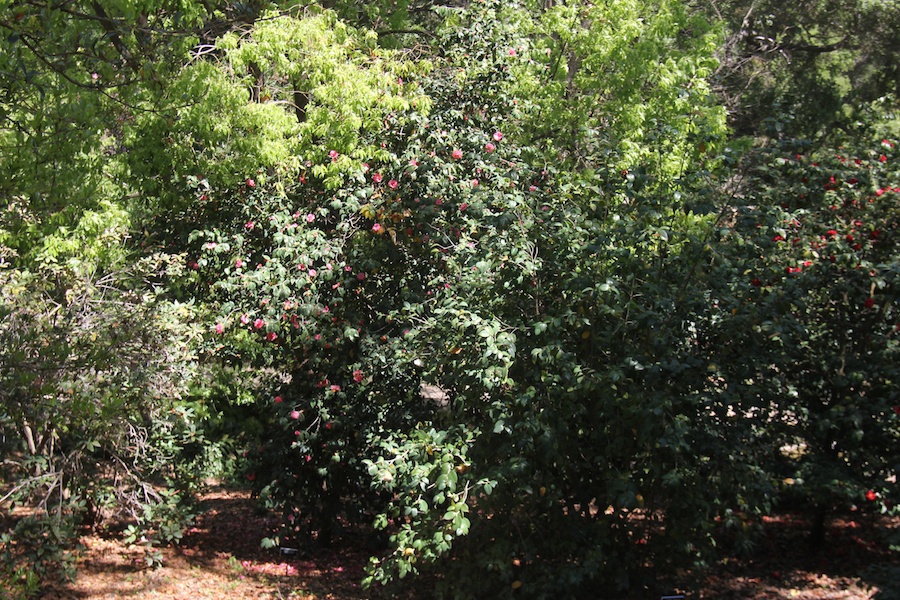
A forest of blossoms
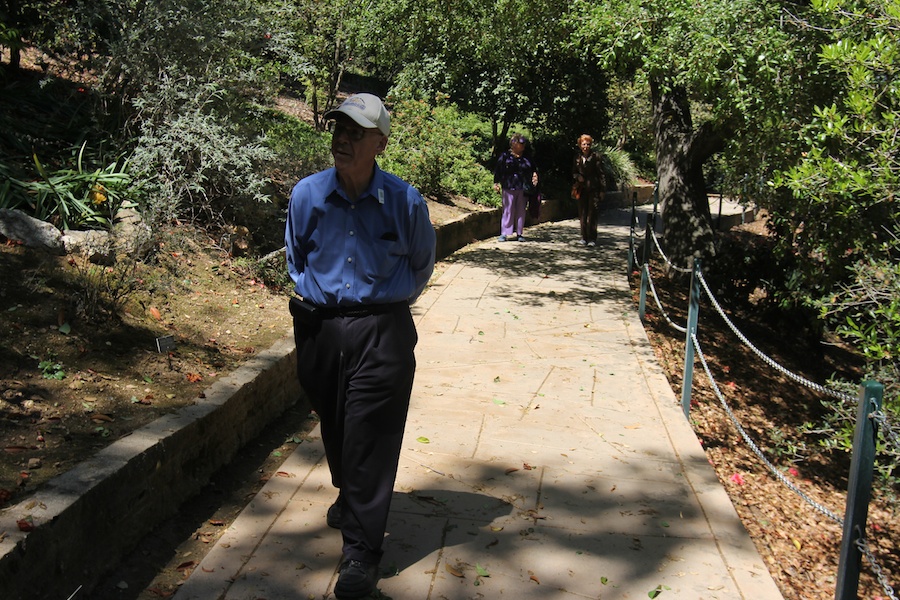
Greag leads the way

The ladies are not far behind...

Time to share....

Wow.... Fire engine reds
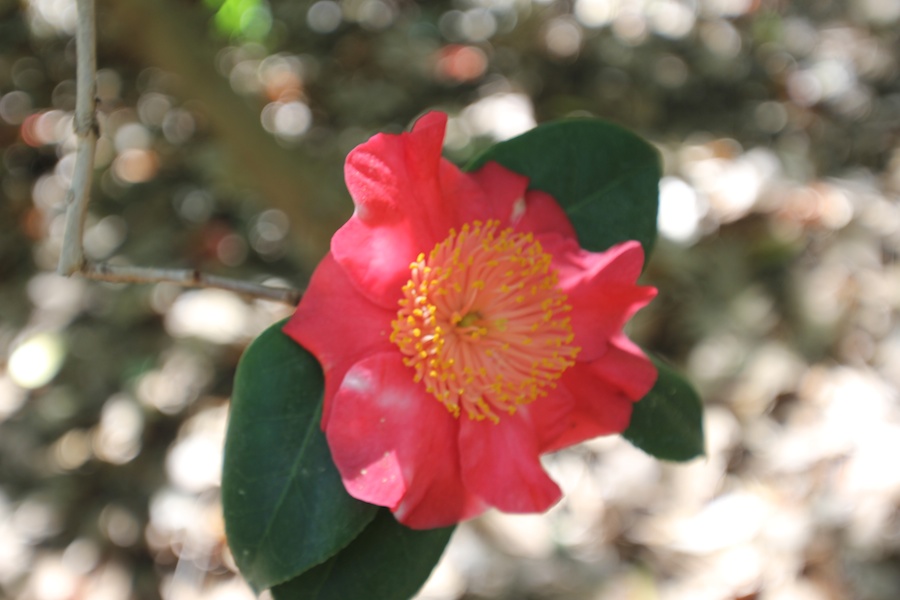
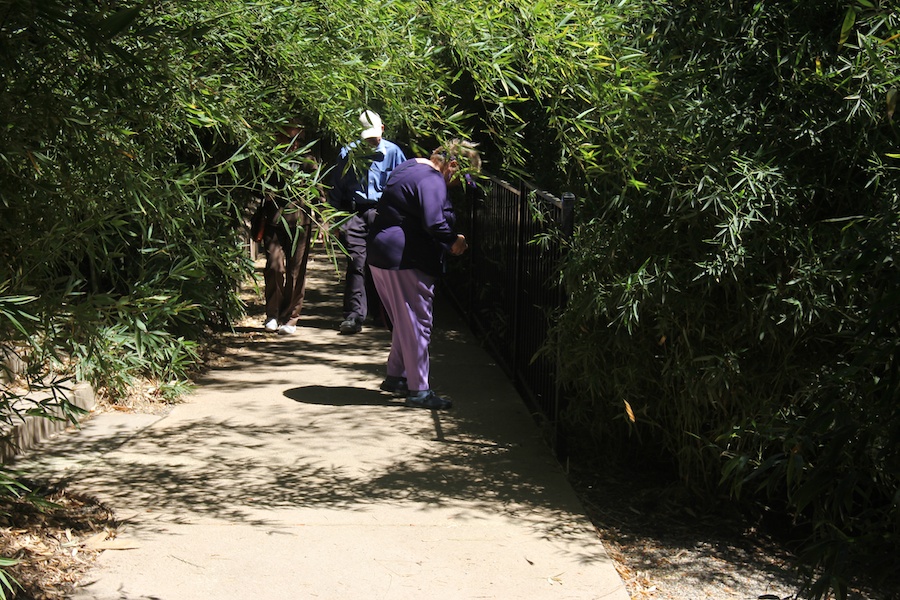
The wind is picking up
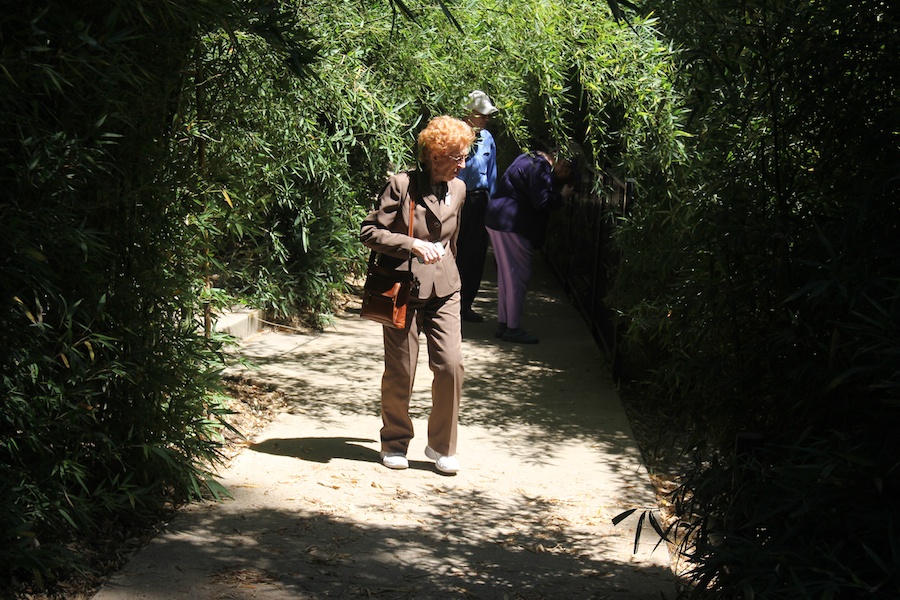
"No Nancy... This way"

"OK... I got it"

Approaching the tea room

The new Tea House had a brook running through the garden
Did You Know? - A stream is a body of water with a current, confined within a bed and stream banks.
Depending on its locale or certain characteristics, a stream may be referred to as a branch, brook, beck, burn, creek, "crick", gill (occasionally ghyll), kill, lick, mill race, rill, river, syke, bayou, rivulet, streamage, wash, run or runnel.


"Hey... My iPhone is beeping at me??"
A Visit To The Tea House
Take a peek inside the Japanese Garden?s ceremonial teahouse and learn the traditions behind its use. Informal tours are offered on the second Monday of every month during public hours.

Did You Know? - In Japanese tradition a tea house can refer to a structure designed for holding Japanese tea ceremonies. This structure and specifically the room in it where the tea ceremony takes place is called chashitsu (???, literally "tea room"). The architectural space called chashitsu was created for aesthetic and intellectual fulfillment.
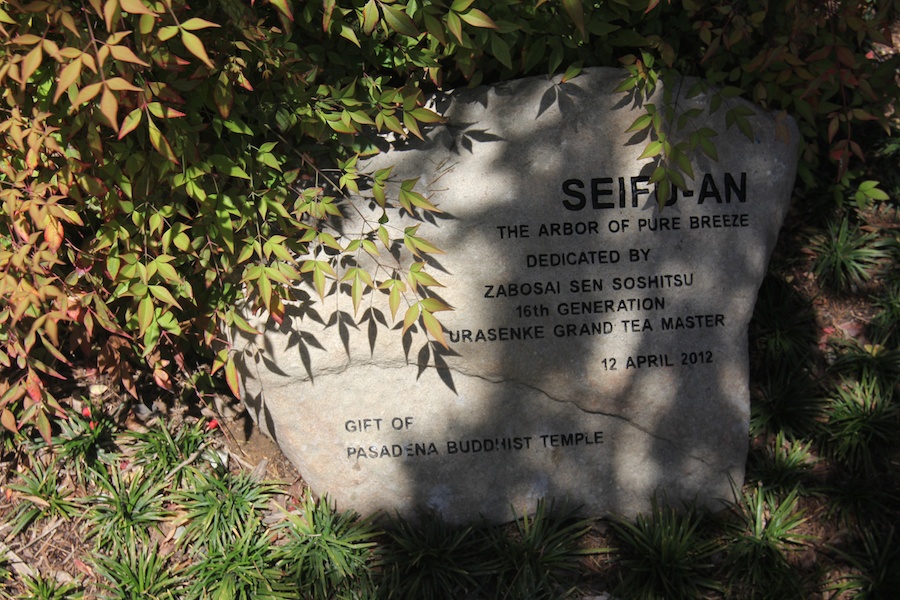
Donated by a local group
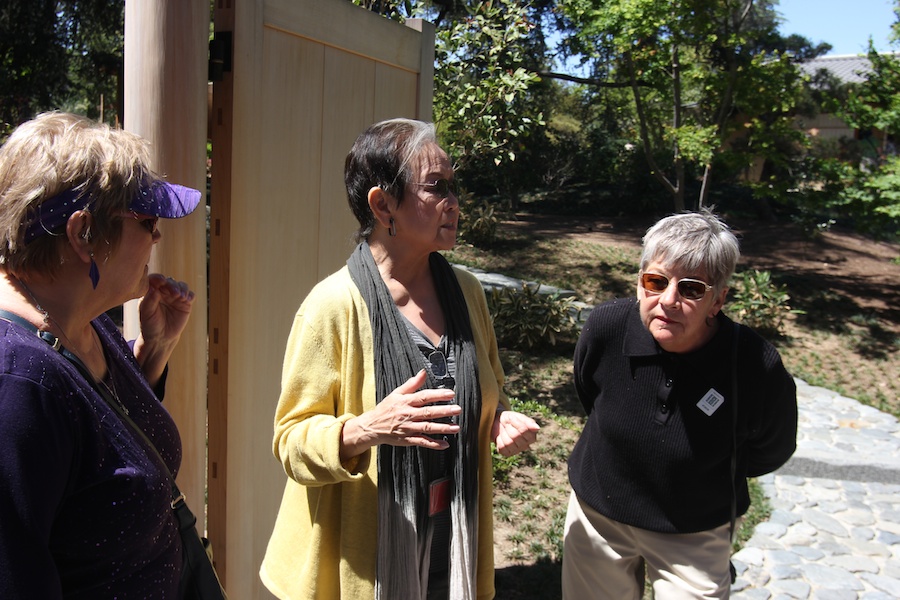
Our guide was super...
She explained the whole thing

We enter the roji - The stones are laid by hand so you can enter the outer area easily
Did You Know? - Roji (???), lit. 'dewy ground', is the Japanese term used for the garden through which one passes to the chashitsu for the tea ceremony. The roji generally cultivates an air of simplicity.
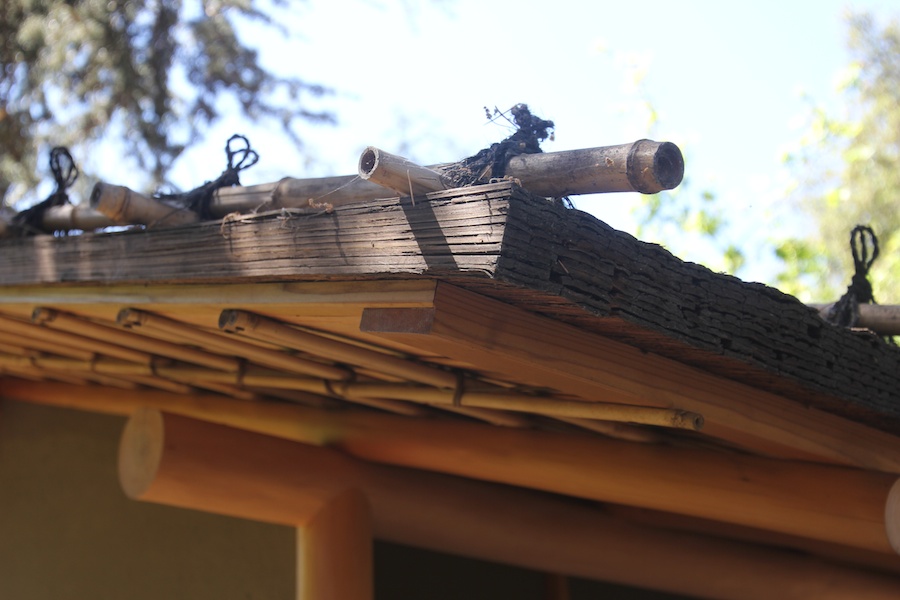
The roof will last forever
on the machiai (waiting arbour)
Did You Know? - The roji is usually divided into an outer and inner garden, with a machiai (waiting arbour). Typical features include the tsukubai (ablution basin), t?r? (lantern), tobi ishi (stepping stones), and wicket gate. Ostentatious plantings are generally avoided in preference for moss, ferns, and evergreens, although ume and Japanese maple are found.

Beautiful setting

We could see for miles
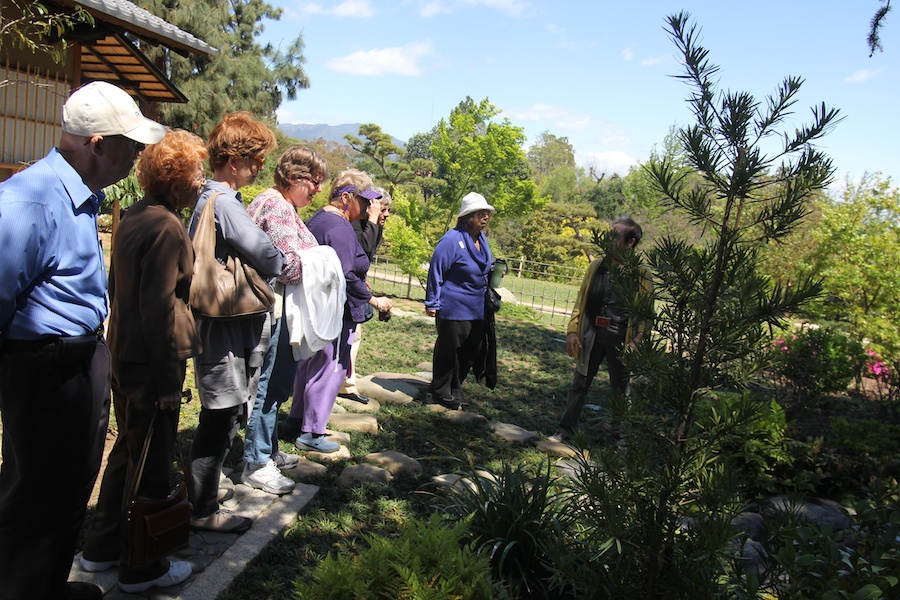
Features include the tsukubai (ablution basin), t?r? (lantern)
Did You Know? - A tsukubai (???) is a small basin provided in Japanese Buddhist temples for visitors to purify themselves by the ritual washing of hands and rinsing of the mouth (perform ablutions). This type of ritual cleansing is also the custom for guests attending a tea ceremony.
Tsukubai are usually of stone, and are often provided with a small scoop, laid across the top, ready for use. A supply of water is provided via a bamboo pipe called a kakei.

The fountain is capped by a stone lantern
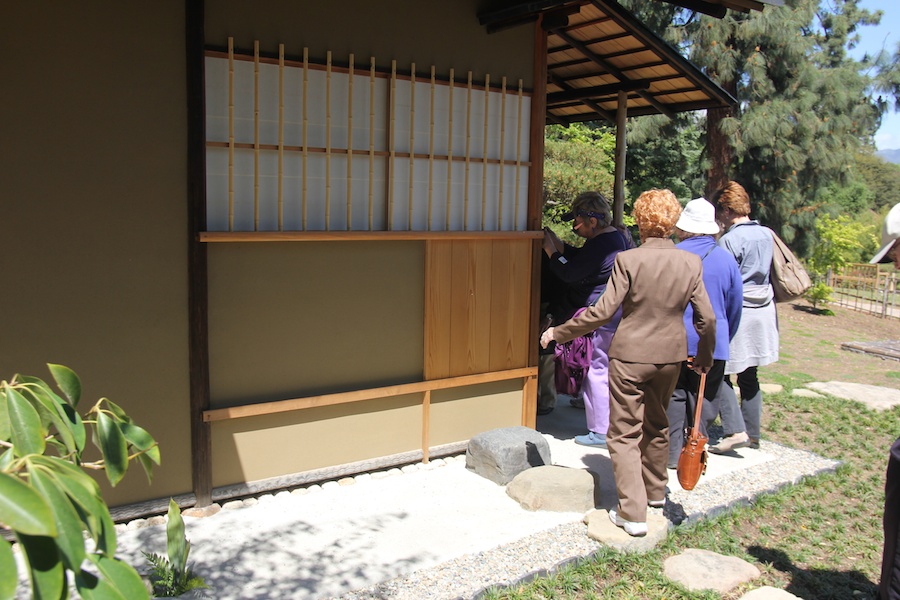
The real entrance is the small sliding door
Did You Know? - In Japanese tradition a tea house can refer to a structure designed for holding Japanese tea ceremonies. This structure and specifically the room in it where the tea ceremony takes place is called chashitsu (???, literally "tea room"). The architectural space called chashitsu was created for aesthetic and intellectual fulfillment.

The door was closed today due to the winds
Did You Know? - In Japan during the Edo period, the term "tea house" could also refer to a place of entertainment with geisha or as a place where couples seeking privacy could go. In this case the establishment was referred to as an ochaya (????), which literally meant "tea house".
However, these establishments did not mainly serve tea, except incidentally, and were instead dedicated to geisha entertainment or to providing discreet rooms for visitors. This usage, however, is now out of date. Contemporary Japanese go to modern tearooms called kissaten on main streets to drink black or green tea as well as coffee.

Interesting fountain
Did You Know? - Roji (???), lit. 'dewy ground', is the Japanese term used for the garden through which one passes to the chashitsu for the tea ceremony. The roji generally cultivates an air of simplicity.

The grounds were beautiful

Amazing colors everywhere
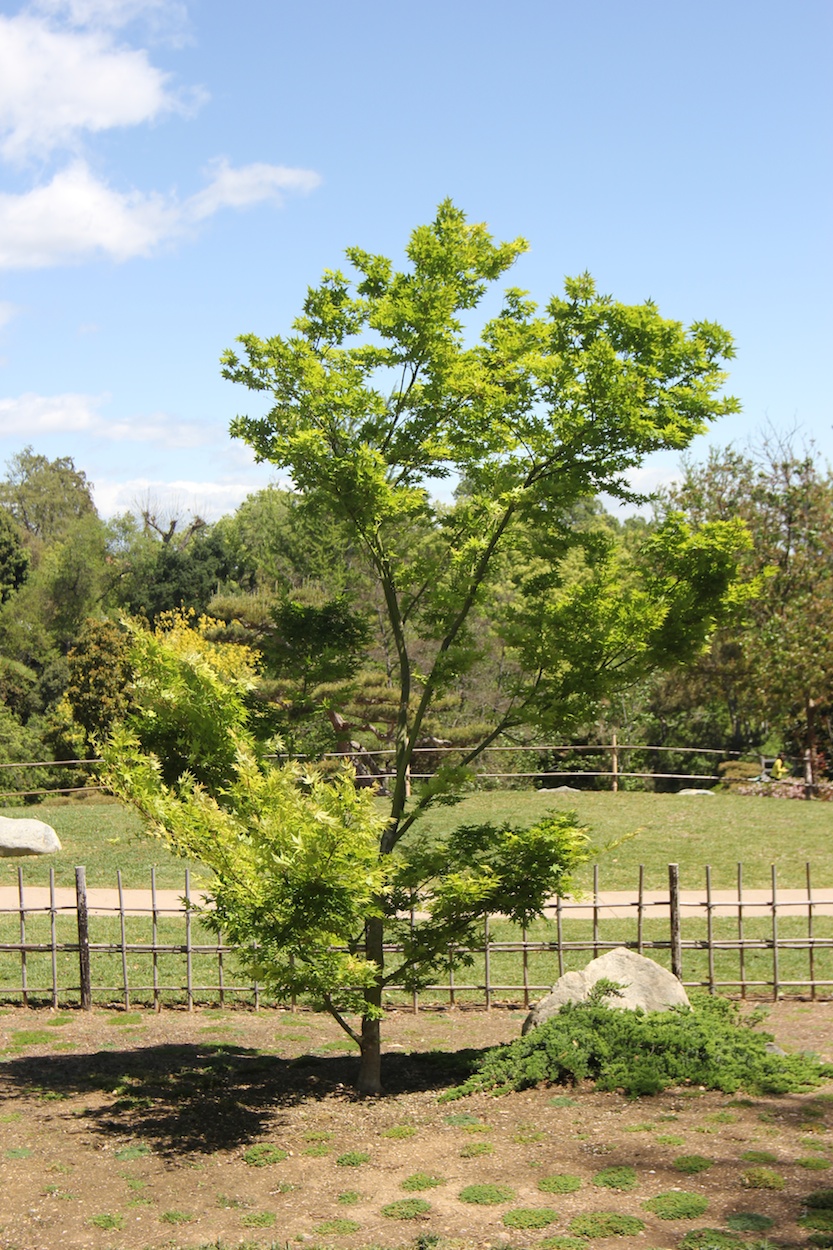
10,000 shades of green
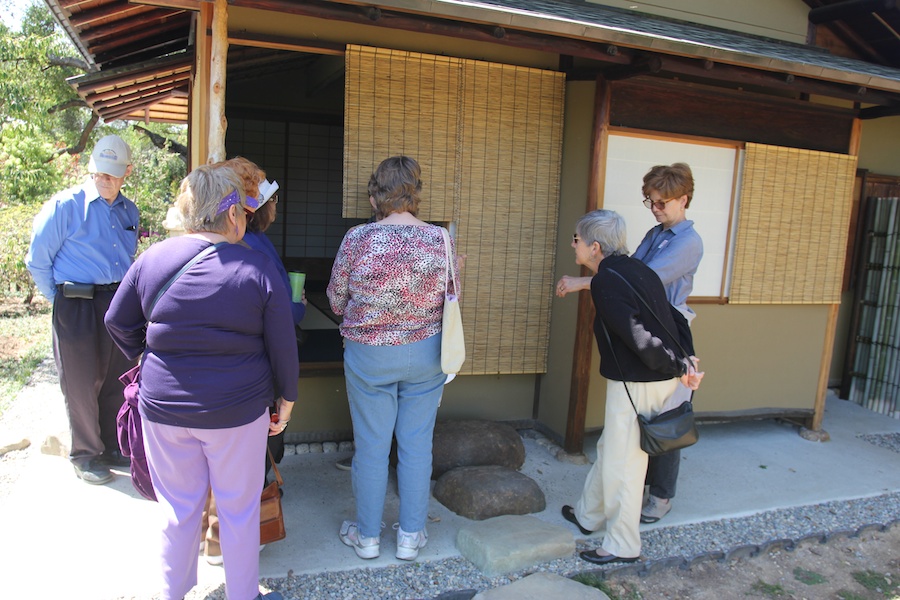
We peaked inside the tea room
Did You Know? - In Japanese tradition, architectural spaces designed to be used for tea ceremony (chanoyu) gatherings are known as chashitsu (??, literally "tea rooms").
The architectural style that developed for chashitsu is referred to as the sukiya style (sukiya-zukuri), and the term sukiya (???) may be used as a synonym for chashitsu. Related Japanese terms are chaseki (??), broadly meaning "place for tea," and implying any sort of space where people are seated to participate in tea ceremony, and chabana, "tea flowers", the style of flower arrangement associated with the tea ceremony.
Typical features of chashitsu are sh?ji windows and sliding doors made of wooden lattice covered in a translucent Japanese paper; tatami mat floors; a tokonoma alcove; and simple, subdued colours and style. The ideal floor size of a chashitsu is 4.5 tatami mats.

The utility room... where plates/bowls are stored
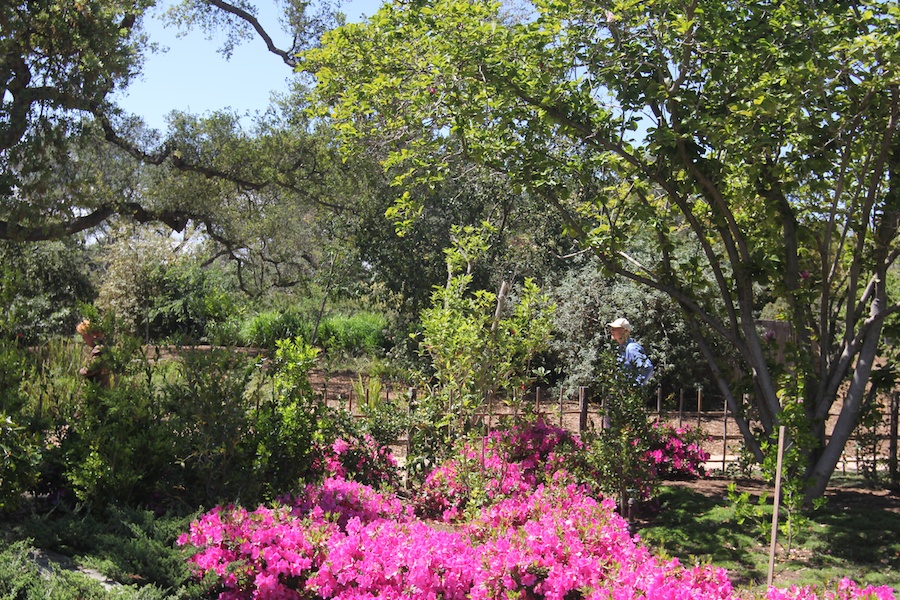
Great flowers in the garden

Gives a new meaning to pink or red
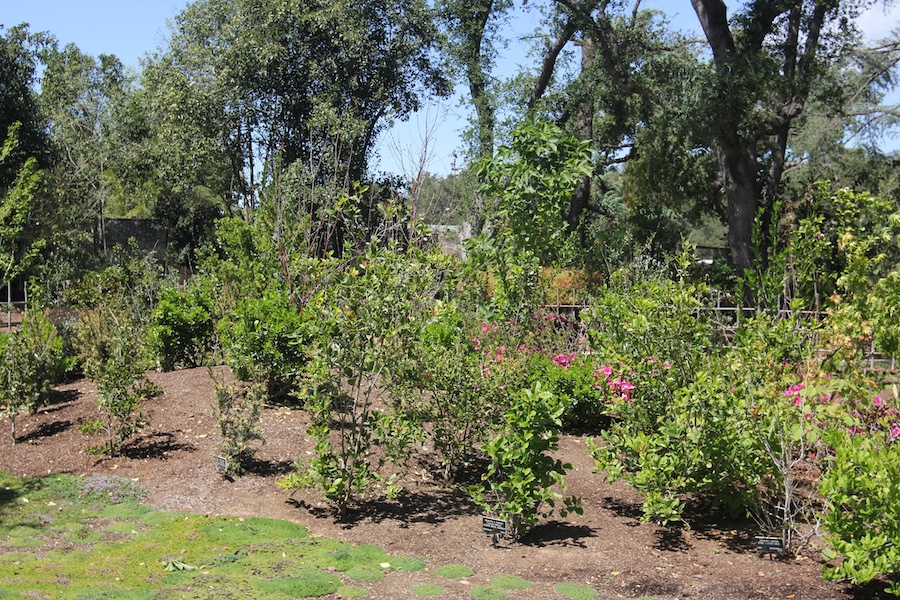
Tea plants in the making

The backside of the tea room

Ah So... Time to rest a bit
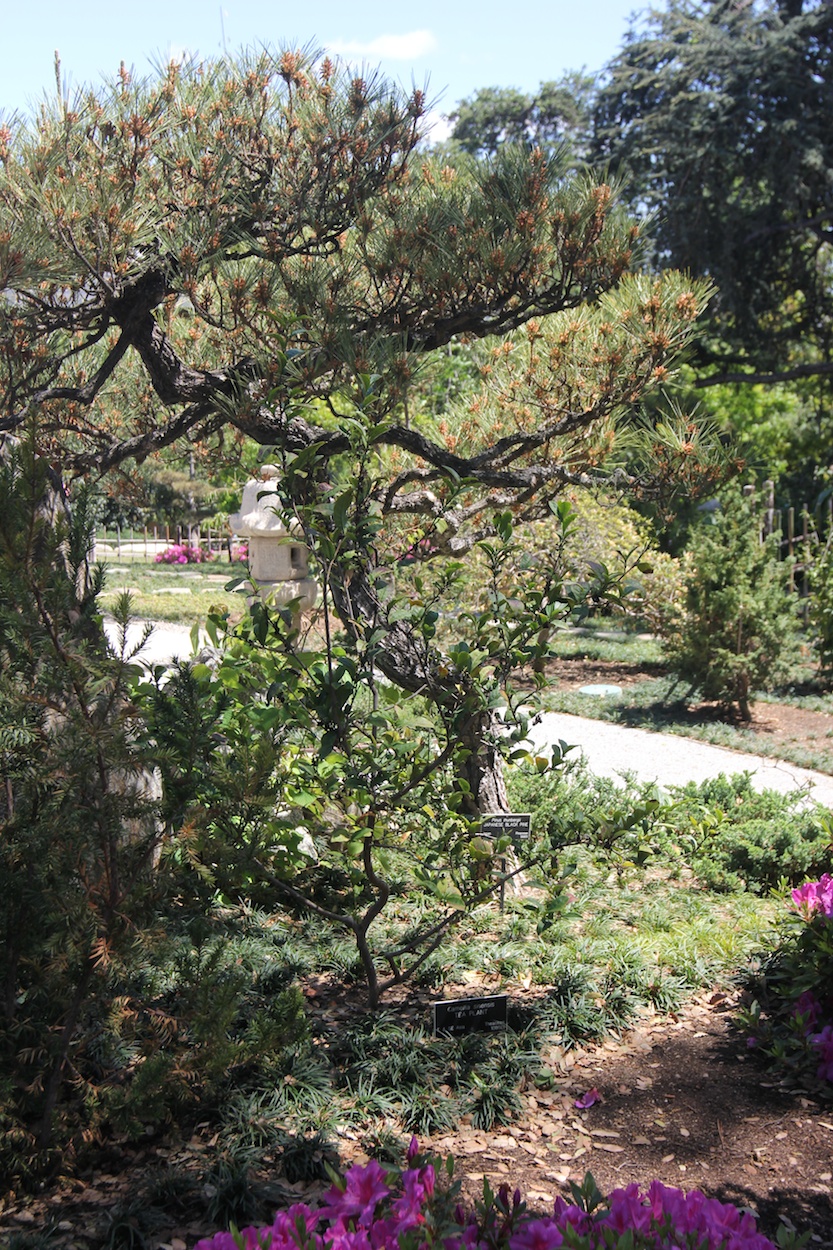
Tea plant in the forefront

Bamboo fences last about ten years before having to be replaced

Saying goodbye to our guide
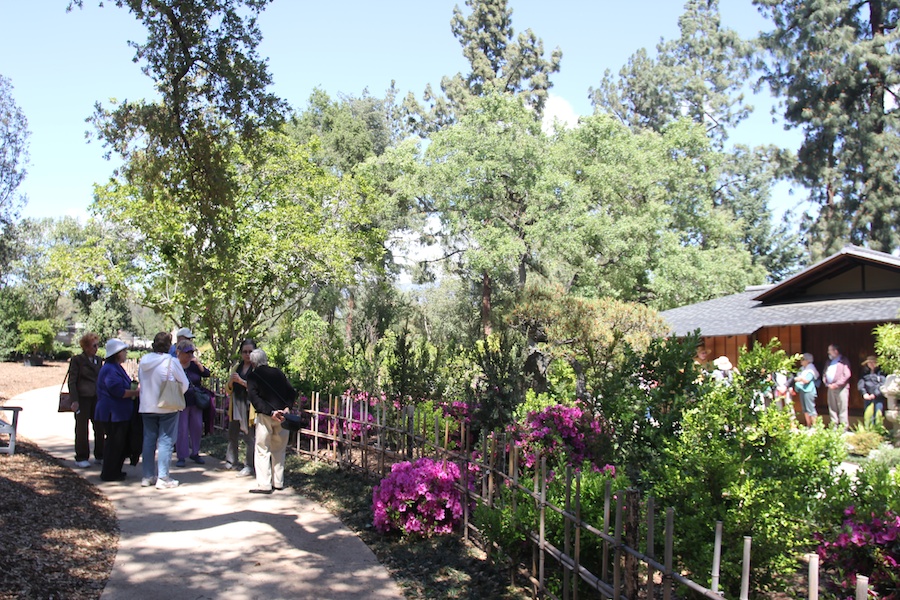
A beautiful setting


Last minute questions
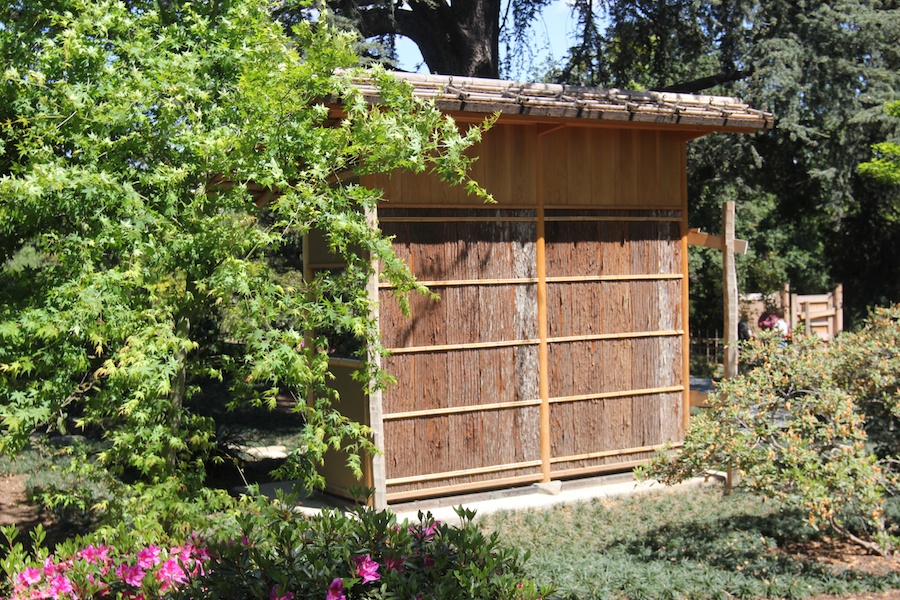
Bark on the back of the small shed....
Heading Toward The Tea Room For Our Turn At Tea (... And Champagne)
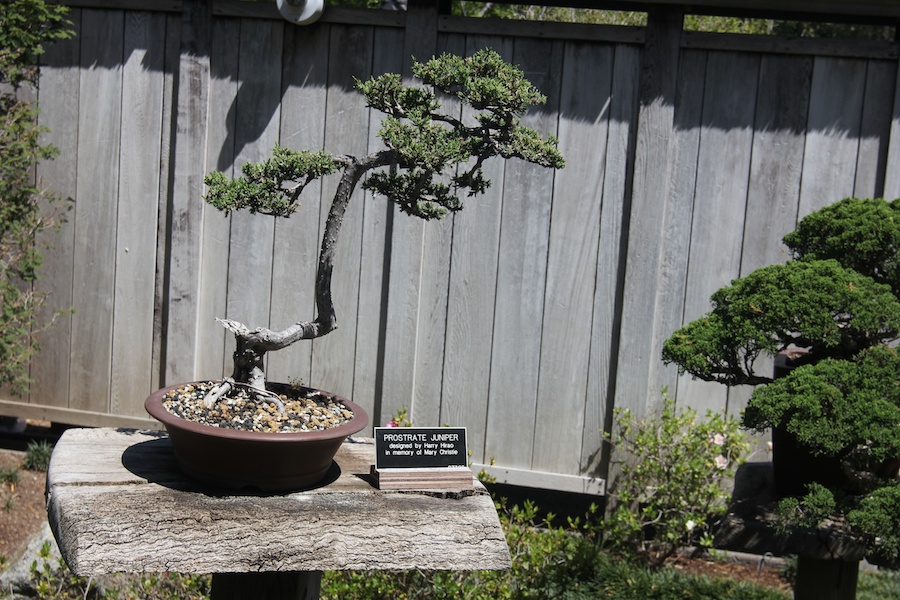
Bonsai

Amazing plants... Many are 100 years old

This month they are green.... Wow
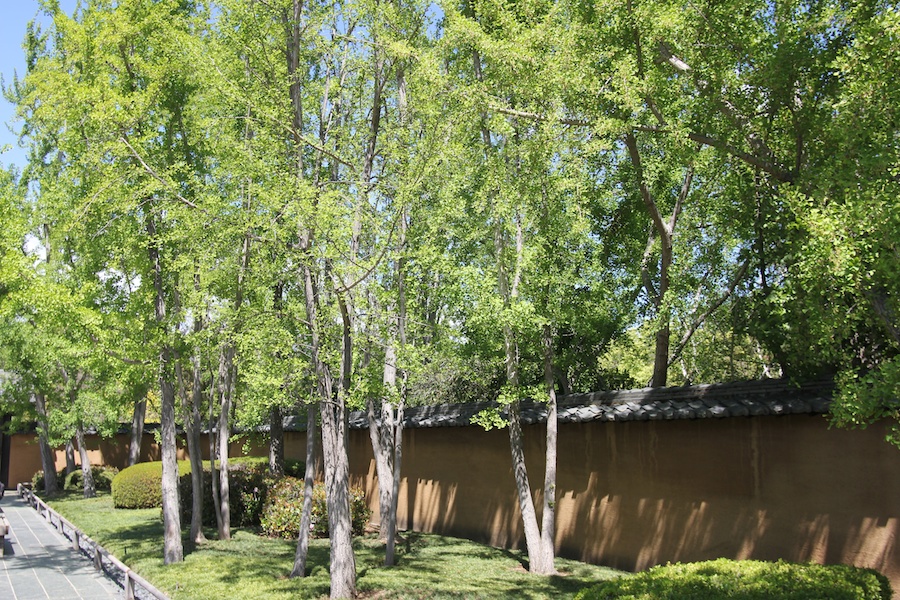


Follow the path...

We took the high road

The moon bridge is in the distance

Wisteria
Did You Know? - Wisteria (also spelled Wistaria or Wysteria) is a genus of flowering plants in the pea family, Fabaceae, that includes ten species of woody climbing vines native to the Eastern United States and to China, Korea, and Japan. Some species are popular ornamental plants, especially in China and Japan. An aquatic flowering plant with the common name wisteria or 'water wisteria' is in fact Hygrophila difformis, in the family Acanthaceae.

Standing tall

Miniature maples

Pink and green...
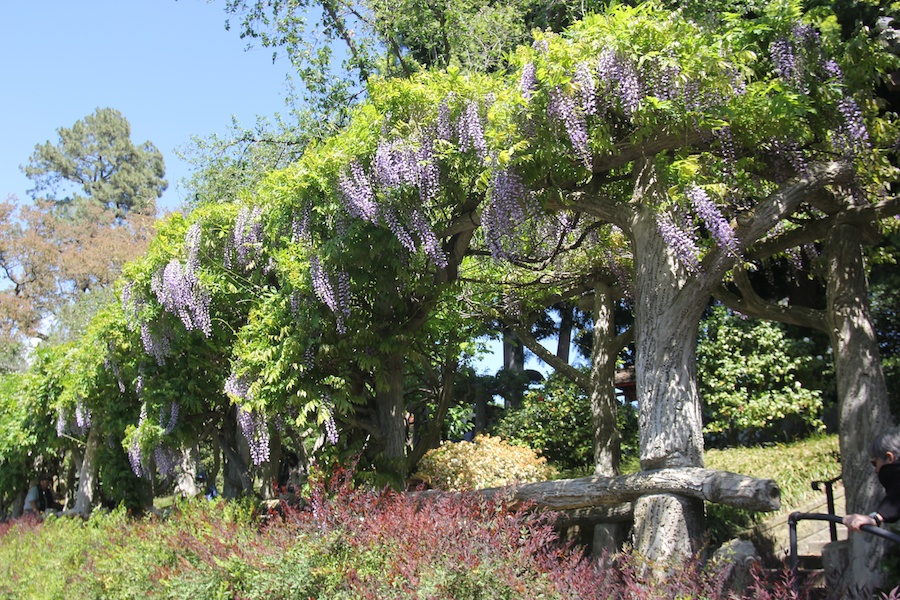
Wisteria hanging over the pathway
Did You Know? - Wisteria vines climb by twining their stems either clockwise or counterclockwise round any available support. They can climb as high as 20 m above the ground and spread out 10 m laterally. The world's largest known Wisteria vine is in Sierra Madre, California , measuring more than 1 acre (0.40?ha) in size and weighing 250 tons, planted in 1894 of the Chinese lavender variety.


